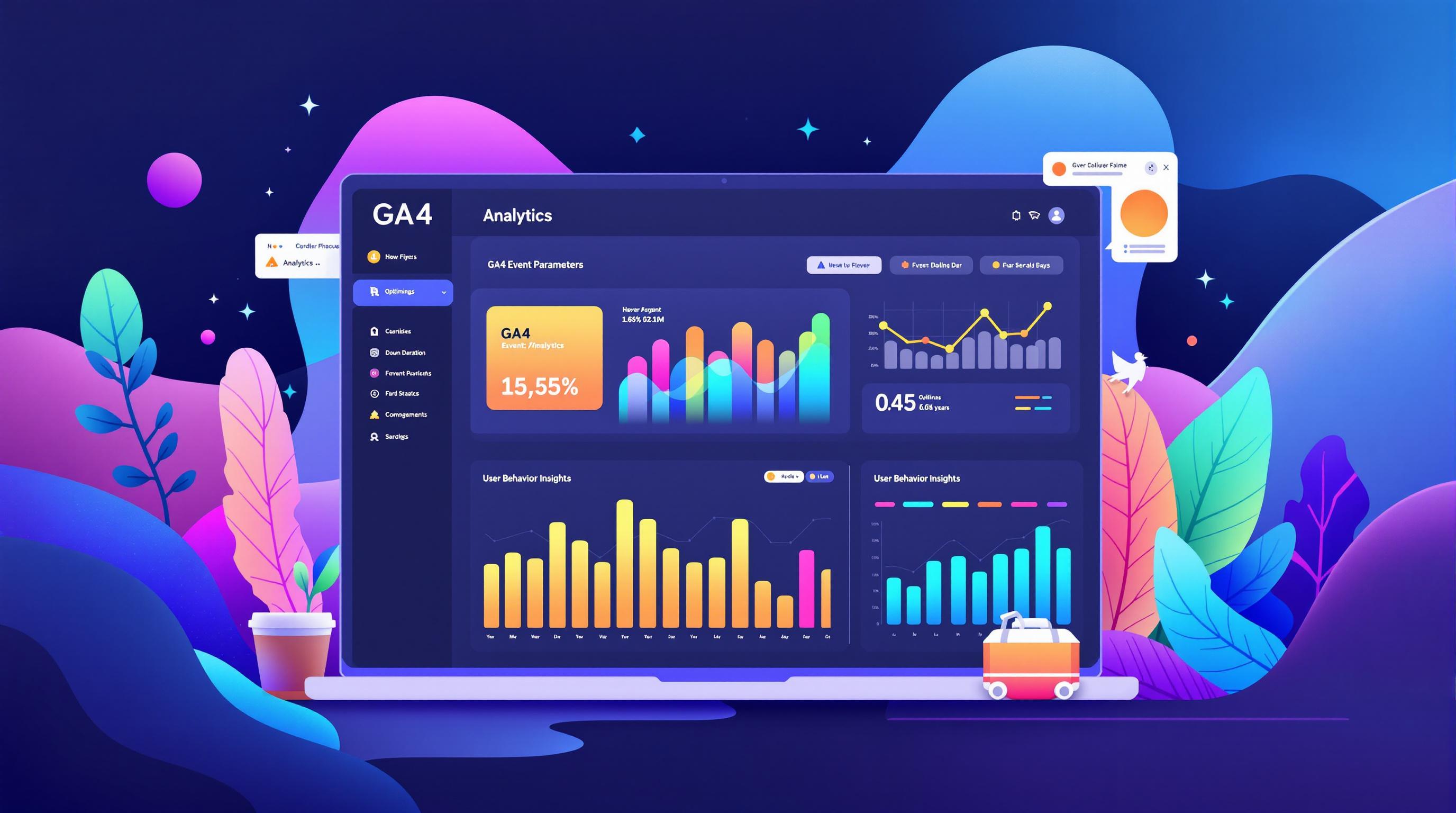Server-side tracking (SST) is essential for accurate data collection and compliance with privacy regulations. But how much should you budget for it? Here’s a quick breakdown of typical costs and considerations:
- Basic Hosting Costs: A dual-server setup (e.g., Google Cloud Run) starts at $90/month.
- Event Volume Costs: Third-party services like Stape charge €20/month for 100,000 events or €50/month for 1 million events.
- Developer Support: Initial setup may require 40–60 hours of a senior developer’s time, with ongoing maintenance taking 10–15 hours/month.
- Analytics Integration: Costs for integrating platforms like Google Analytics 4 or Meta Conversion API range from $200–$1,000/month depending on complexity.
For a website with 50,000 monthly visitors (generating ~500,000 events), expect to spend around $90–$200/month on hosting and event tracking, plus additional setup and integration costs. SST offers scalability and reliability, making it worth the investment for growing businesses.
Detailed Breakdown of Server-Side Tracking Costs
Cloud Hosting Costs
Cloud hosting is a key part of server-side tracking expenses. A basic dual-server setup usually costs about $90 per month. Businesses can opt for self-hosted setups or third-party services depending on their needs. Providers like Stape offer pricing based on the number of events tracked:
| Event Volume (Monthly) | Cost |
|---|---|
| Up to 2,500 events | Free |
| 100,000 events | €20 |
| 1 million events | €50 |
| 10 million events | €200 |
To figure out your server needs, multiply your monthly visitors by ten. This gives you an estimate of the server requests you'll handle, as each visitor typically triggers multiple tracking events [1]. Use this calculation to decide if self-hosting or a third-party service is better for your scale.
Costs for Developer and Technical Support
Setting up and maintaining the system requires skilled developers. For the initial setup, expect a senior developer to spend 40-60 hours. After that, ongoing maintenance - like system monitoring, updates, and verifying data accuracy - takes about 10-15 hours per month.
Costs of Analytics Platform Integration
Integrating analytics platforms adds specific requirements that can impact hosting and development costs. Here’s a quick breakdown:
| Platform | Setup Requirements | Additional Considerations |
|---|---|---|
| Google Analytics 4 | Server configuration | Data processing costs |
| Meta Conversion API | Custom endpoint setup | Event validation |
To keep costs under control without compromising data quality, use efficient data processing methods and caching strategies [1]. For high-traffic websites, adding a Content Delivery Network (CDN) can ease server load by distributing data collection across multiple endpoints.
As your tracking needs grow, combining well-optimized server configurations with CDNs offers a scalable way to manage costs while ensuring reliable data collection. This approach is especially useful for handling high traffic and complex tracking setups.
Full Google Analytics 4 Server Side Tracking Set Up (From Scratch)

Calculating and Planning Your Server-Side Tracking Budget
Now that you understand hosting and integration costs, let’s break down how to calculate your budget based on traffic and event volume.
Estimating Costs and Comparing Providers
For a website with 50,000 visitors per month, you can estimate around 500,000 events (50,000 × 10). Using Stape, this would cost €20/month. On the other hand, a dual-server setup with Google Cloud Platform (GCP) would run about $90/month [1].
Here’s a quick comparison of popular options:
| Provider Type | Monthly Cost | Best For |
|---|---|---|
| GCP (2 instances) | $90 | Larger businesses |
| Stape (1M events) | €50 | Mid-sized setups |
| Self-hosted | $100-200 | Tech-savvy users |
Planning for Traffic Growth
Start with a dual-server setup and keep an eye on event volumes. As your traffic increases, you can scale up resources. To handle sudden spikes, leverage automatic server scaling and CDNs (as mentioned earlier) [2].
Tips for managing costs effectively:
- Monitor event volumes and adjust server resources accordingly.
- Use efficient data processing techniques to reduce overhead.
- Maintain high data quality while keeping expenses under control.
sbb-itb-38e9f15
Tips for Cost-Effective Server-Side Tracking Implementation
Optimizing Server Performance
Google Cloud Run is a reliable option for handling server-side tracking, offering scalable setups that manage 35–350 requests per second. To make your server more efficient:
- Filter out unnecessary events to reduce workload.
- Allocate resources wisely, such as 1 vCPU and 0.5GB memory per instance.
- Set up auto-scaling to adjust based on traffic patterns.
Planning Analytics Integration Costs
After optimizing your server, it’s time to budget for integrating analytics platforms. Each platform has its own setup needs. Here's a quick breakdown:
| Integration Type | Key Considerations | Typical Setup Requirements |
|---|---|---|
| Google Analytics 4 | Configuring data streams | Developer time + platform fees |
| Marketing Pixels | Linking Meta, TikTok, Snap | Extra server resources |
| Custom Events | Validating and testing events | Technical support time |
Leveraging Consulting Services
If your team doesn’t have the expertise to handle this in-house, consulting services can help streamline the process while keeping costs in check. Experts can assist with:
- Server configuration reviews to ensure optimal setups.
- Integration planning to map out data flows and eliminate bottlenecks.
- Cost-saving strategies for smarter data collection and usage.
Conclusion: Key Points on Server-Side Tracking Budgeting
Server-side tracking expenses generally fall into three categories: cloud hosting (starting around $90/month for a dual-server setup), developer support ($500–$2,000/month), and analytics integration ($200–$1,000/month). Each of these is essential for building a tracking system that balances performance with cost considerations.
Breakdown of Cost Components
Services designed specifically for server-side tracking can help manage costs effectively while ensuring reliable performance [1]. When choosing a solution, it's important to weigh both upfront costs and future scalability. For instance, platforms like Google Cloud Run offer pricing models that adjust based on your traffic, while developer and analytics costs depend on the complexity of your setup and the tools you select [2].
Practical Budgeting Tips
Here are some actionable ways to manage your server-side tracking budget:
- Opt for dynamic platforms like Google Cloud Run that scale with your traffic needs.
- Fine-tune server resources to match actual usage patterns and avoid over-provisioning.
- Seek expert assistance during setup to minimize errors and ensure compliance with data regulations.
FAQs
Is GTM server-side free?
The GTM server-side software itself is free, but there are costs involved in setting it up and maintaining it. For example, hosting typically starts at $90 per month for a dual-server setup [2]. These servers are designed to scale automatically, ensuring they can handle traffic spikes while maintaining reliable performance.
Cloud Run plays a key role here, dynamically adjusting resources based on actual usage [2]. This ensures efficient handling of workloads while keeping costs aligned with your needs.
Other expenses to keep in mind include:
- Developer support for setup and ongoing maintenance.
- Integration with analytics platforms to ensure accurate data tracking.
- Expert consulting, if specialized guidance is needed.
To budget effectively, assess your current traffic levels and consider future growth. This will help you estimate costs and ensure your tracking setup fits your needs. For more details, refer back to the earlier sections on cost planning and implementation strategies.



